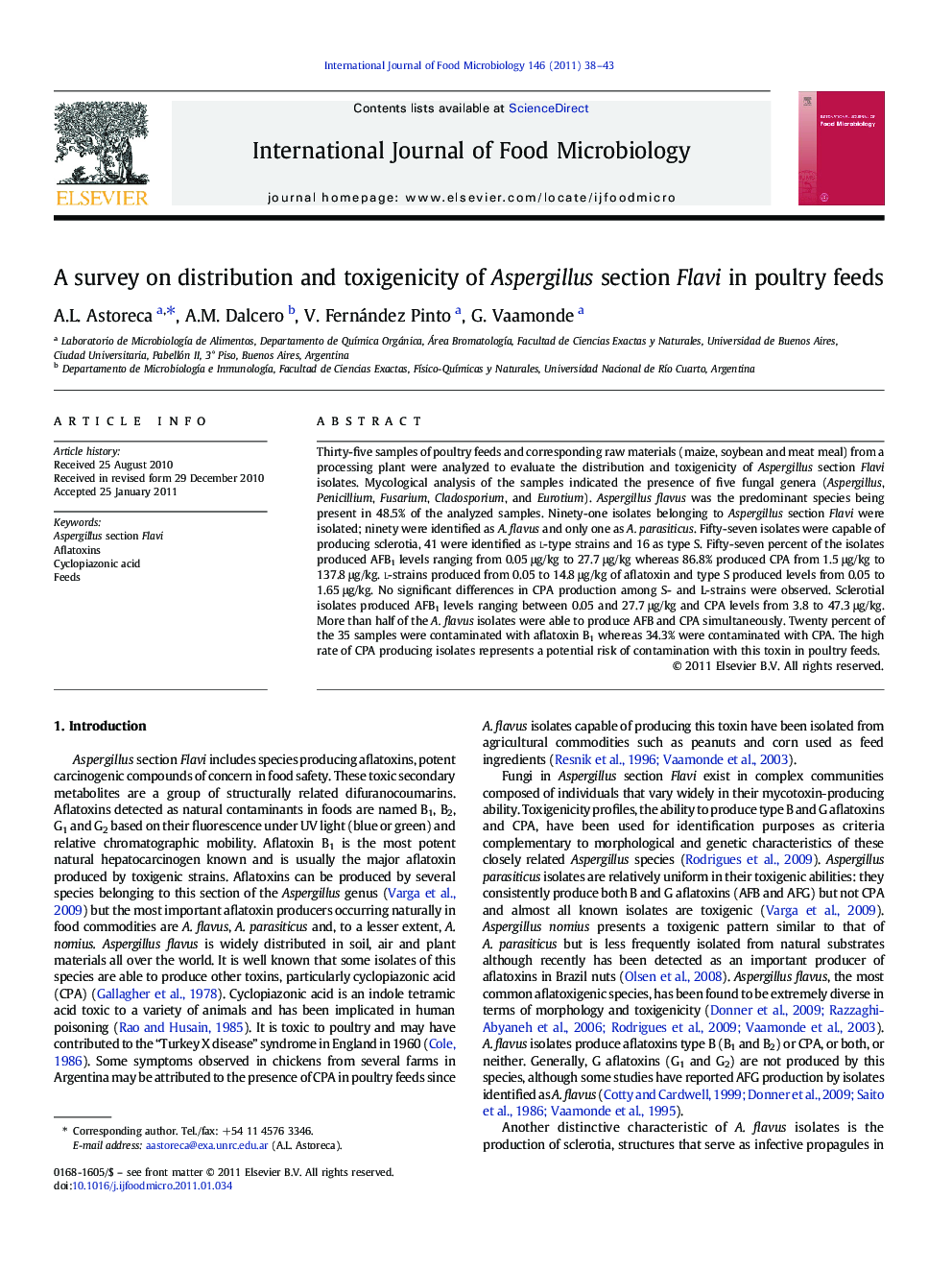| کد مقاله | کد نشریه | سال انتشار | مقاله انگلیسی | نسخه تمام متن |
|---|---|---|---|---|
| 4368684 | 1616672 | 2011 | 6 صفحه PDF | دانلود رایگان |

Thirty-five samples of poultry feeds and corresponding raw materials (maize, soybean and meat meal) from a processing plant were analyzed to evaluate the distribution and toxigenicity of Aspergillus section Flavi isolates. Mycological analysis of the samples indicated the presence of five fungal genera (Aspergillus, Penicillium, Fusarium, Cladosporium, and Eurotium). Aspergillus flavus was the predominant species being present in 48.5% of the analyzed samples. Ninety-one isolates belonging to Aspergillus section Flavi were isolated; ninety were identified as A. flavus and only one as A. parasiticus. Fifty-seven isolates were capable of producing sclerotia, 41 were identified as L-type strains and 16 as type S. Fifty-seven percent of the isolates produced AFB1 levels ranging from 0.05 μg/kg to 27.7 μg/kg whereas 86.8% produced CPA from 1.5 μg/kg to 137.8 μg/kg. L-strains produced from 0.05 to 14.8 μg/kg of aflatoxin and type S produced levels from 0.05 to 1.65 μg/kg. No significant differences in CPA production among S- and L-strains were observed. Sclerotial isolates produced AFB1 levels ranging between 0.05 and 27.7 μg/kg and CPA levels from 3.8 to 47.3 μg/kg. More than half of the A. flavus isolates were able to produce AFB and CPA simultaneously. Twenty percent of the 35 samples were contaminated with aflatoxin B1 whereas 34.3% were contaminated with CPA. The high rate of CPA producing isolates represents a potential risk of contamination with this toxin in poultry feeds.
Research Highlights
► The mycological analysis of the samples indicated the presence of five fungal genera.
► The Fifty-seven percent of the isolates produced AFB1 and 86.8% were producer of CPA. – More than half of tested isolates were able to produce AFB and CPA simultaneously.
► Twenty percent of the samples were contaminated with AFB1 while 34.3% were contaminated with CPA.
► High rate of CPA producers isolates represents a potential risk of contamination in poultry feeds.
Journal: International Journal of Food Microbiology - Volume 146, Issue 1, 15 March 2011, Pages 38–43